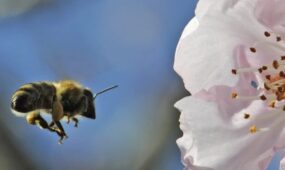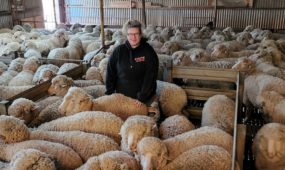Automated scanner to count parasites in farmed fish
Primary Industries
SCIENTISTS in South Australia are developing an automated scanning technique for rapid and accurate counting of parasites on Yellowtail Kingfish.

Sign up to receive notifications about new stories in this category.
Thank you for subscribing to story notifications.
The approach, developed by project leader Associate Professor Ian Whittington at the University of Adelaide, gives aquaculture managers a quick and cost-effective tool to maintain good health and optimise growth in their stock.
“External parasitic worms that infect the skin and gills of Yellowtail Kingfish are among the most serious health issues for the culture of this species,” said Whittington, who also holds a joint position at the South Australian Museum.
Kingfish
The current method for assessing Kingfish parasite numbers involves removing parasites from individual fish, then viewing under a microscope and counting one by one. The staff member must be trained to recognize each parasite species and life cycle stage.
The new method is faster and less reliant on trained staff, Whittington said.
“The approach relies quite simply on a Perspex tray placed on top of an ordinary flatbed scanner, a microscope and a specially-designed computer program. The parasites collected from the fish are separated into a single layer, the scanner collects an image of the worms and the program performs the analysis and sends the results to a spreadsheet,” he said.
Whittington’s innovative scanner may be one of dozens of aquaculture technologies discussed at the World Aquaculture Adelaide Conference and Tradeshow that begins in Adelaide on 7 June at the Adelaide Convention Centre.
Skin worms typically have a short and squat appearance, whereas the gill worms have a more cylindrical shape.
“Within about three minutes you’ve got an output about how many skin and gill parasites there are, as well as information on their length and width. You can then work out how many egg-laying adults you have, how many are on the verge of adulthood and how many are juveniles.”
Rapid assessment of parasite burden means that fish can be treated more effectively.
barramundiWhittington
Yellowtail Kingfish and related species are an important global aquaculture species.
In Japan fish are raised in cages after being wild-caught.
“Because the caged fish are stressed from being in a confined area, and their diet is not optimal – being comprised of pelletised food – the parasites with direct lifecycles can take hold and become established very quickly,” said Whittington.
The project is being conducted with collaborators at SARDI Aquatic Sciences and the Institute of Aquaculture at The University of Stirling, Scotland.
World Aquaculture Adelaide Conference and Tradeshowhttp://www.aquaculture.org.au/
The Lead's coverage of the World Aquaculture Conference Adelaide:
Kakadu Plum extract extends fresh shelf life of prawns and seafood
Seafood company breeds a solution to devastating Pacific Oyster Disease
Jump to next article



